The Best Secondhand Shops for Sustainable Shopping
In a world increasingly aware of its environmental footprint, secondhand shopping has emerged as a beacon of hope for both style enthusiasts and eco-conscious consumers alike. Imagine sifting through racks of clothing, each piece with its own story, waiting to be rediscovered and cherished once more. Not only does this practice allow you to find unique treasures, but it also plays a crucial role in promoting sustainability. By choosing to shop secondhand, you’re not just saving money; you’re actively participating in a movement that aims to reduce waste and minimize the carbon footprint associated with producing new goods.
So, where do you begin your journey into the world of secondhand shopping? The options are endless, ranging from local thrift stores to online platforms that make it easier than ever to find quality items without leaving your home. In this article, we will explore some of the best secondhand shops around, highlighting their unique offerings and the positive impact they have on our planet. Whether you're on the hunt for vintage clothing, furniture, or quirky home decor, you’ll discover that sustainable shopping can also be stylish and fun!
To kick things off, let’s dive into why choosing secondhand is not just a trend, but a lifestyle choice that benefits everyone. When you opt for pre-owned items, you’re contributing to a circular economy, where products are reused and repurposed rather than tossed aside. This not only helps keep items out of landfills but also reduces the demand for new manufacturing, which often involves significant resource consumption and pollution. In essence, every secondhand purchase you make is a step towards a more sustainable future.
Now, let’s take a closer look at some of the top online platforms that have revolutionized the way we shop secondhand. With just a few clicks, you can explore a vast array of options from the comfort of your home. Some popular websites and apps include:
- ThredUp - A massive online thrift store that specializes in women's and children's clothing.
- Poshmark - A social marketplace where users can buy and sell fashion items.
- Depop - A trendy app popular among younger generations for unique vintage finds.
These platforms not only provide a convenient shopping experience but also foster a sense of community among buyers and sellers. As you navigate through these sites, keep an eye out for quality items that speak to your personal style. After all, secondhand shopping is about finding pieces that resonate with you, while also making a positive impact on the environment.
In addition to online shopping, let’s not forget about the charm of local secondhand shops. These hidden gems often hold a treasure trove of unique finds that you simply can’t get anywhere else. By supporting small businesses, you’re not just purchasing items; you’re investing in your community. Local shops often curate their collections with great care, ensuring that each piece has its own character and history. Plus, you get the added benefit of meeting passionate shop owners who are eager to share their knowledge and stories about the items they sell.
As we explore the best secondhand shops, keep in mind that successful secondhand shopping requires a bit of strategy. Knowing how to identify quality items, negotiating prices, and understanding the value of what you’re buying can enhance your experience significantly. With a little practice, you’ll become a savvy secondhand shopper in no time!
In conclusion, secondhand shopping is not just a way to save money; it’s a lifestyle choice that promotes sustainability and supports local economies. Whether you choose to shop online or explore your local thrift stores, remember that every purchase you make contributes to a larger movement towards a more sustainable future. So, grab your reusable shopping bag and embark on this exciting journey of discovery. Happy shopping!
- What are the benefits of shopping secondhand? Shopping secondhand reduces waste, saves money, and supports local businesses.
- How can I find quality secondhand items? Look for well-known brands, check for signs of wear, and assess the materials used.
- Are online secondhand platforms safe? Yes, many reputable platforms have buyer protection policies in place.
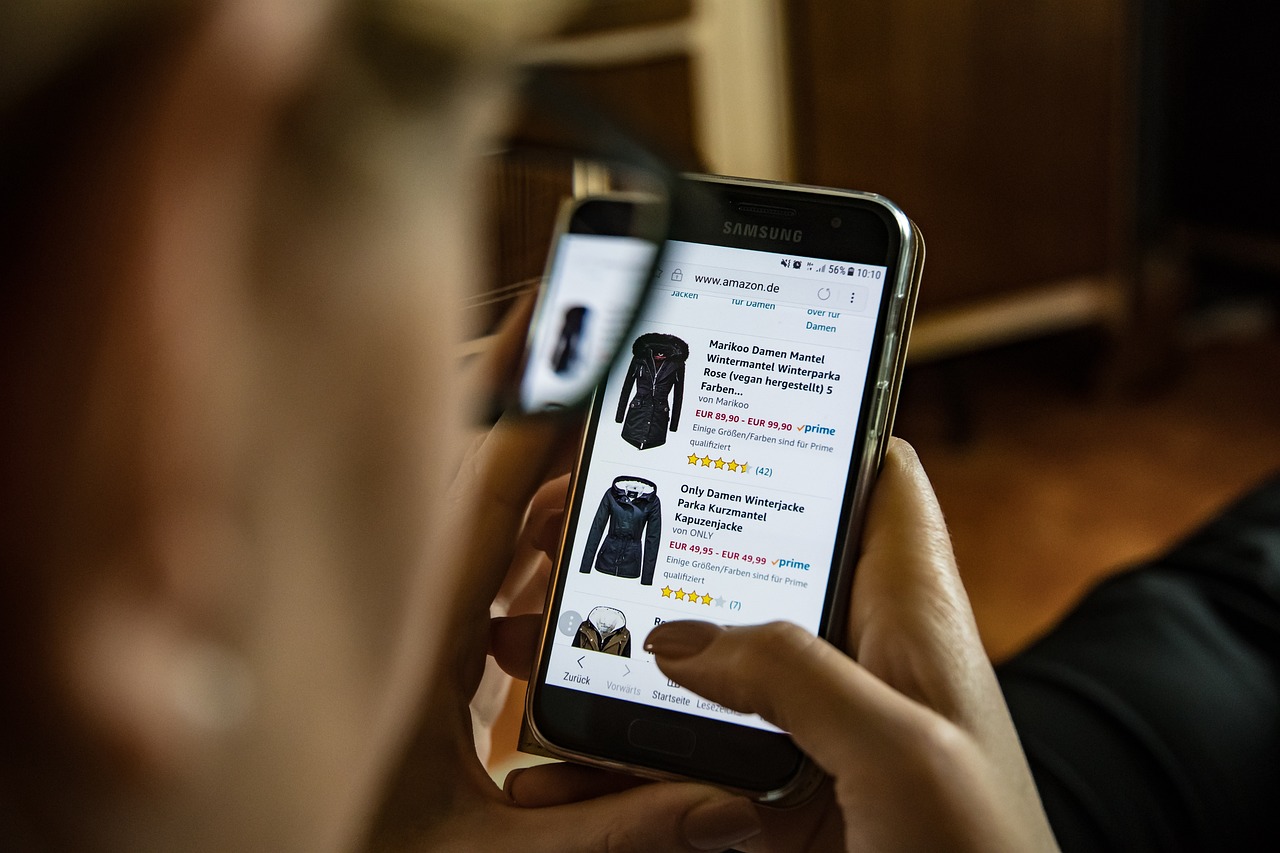
Why Choose Secondhand Shopping?
When it comes to shopping, have you ever stopped to think about the impact your choices have on the planet? Secondhand shopping is not just a trend; it’s a powerful way to make a difference. By opting for pre-owned items, you’re not only scoring unique treasures but also contributing to a more sustainable future. Imagine giving a second life to clothes, furniture, or books that might otherwise end up in a landfill. It’s like adopting a pet from a shelter instead of buying one from a breeder—you're making a choice that benefits both you and the world around you.
One of the most compelling reasons to embrace secondhand shopping is its role in reducing waste. The fashion industry is notorious for its environmental impact, with fast fashion being a significant contributor to pollution and waste. By choosing secondhand, you’re stepping away from the cycle of overconsumption and helping to promote a circular economy. This means that instead of items being discarded after a single use, they are reused and repurposed, creating a more sustainable system.
Moreover, secondhand shopping can significantly minimize your carbon footprint. Think about it: every new item produced requires resources, energy, and transportation. By buying secondhand, you’re effectively reducing the demand for new products, which in turn lessens the strain on our planet's resources. It's a win-win situation! You get to enjoy unique finds while also playing a part in protecting the environment.
But wait, there’s more! Secondhand shopping often leads to unexpected discoveries. Whether it’s a vintage jacket that tells a story or a rare book that’s no longer in print, the thrill of the hunt is part of the experience. Each item has its own history, and finding that perfect piece can feel like striking gold. Plus, you’ll often find that secondhand items are much more affordable than their brand-new counterparts, allowing you to stretch your budget further while still scoring high-quality goods.
In addition to the personal benefits, supporting secondhand shops often means supporting local businesses and charities. Many thrift stores and consignment shops are community-oriented, using their profits to fund local programs or charities. So, every time you shop secondhand, you’re not just helping the environment; you’re also uplifting your community. It’s a beautiful cycle of giving back!
In summary, choosing secondhand shopping is about more than just saving money; it’s a lifestyle choice that promotes sustainability, reduces waste, and supports local communities. So next time you’re in the mood to shop, consider hitting up a local thrift store or browsing an online secondhand platform. You might be surprised at what you find!
- What are the benefits of secondhand shopping?
Secondhand shopping helps reduce waste, lowers your carbon footprint, and often supports local businesses and charities. - How can I find quality secondhand items?
Look for items made from durable materials, check for signs of wear, and don’t hesitate to ask the seller about the item's history. - Are secondhand items safe to buy?
Yes! Many secondhand items are thoroughly cleaned and inspected before being sold. Just make sure to inspect them yourself, especially clothing and electronics. - Where can I find secondhand shops?
You can find secondhand shops in your local area, as well as online platforms like Poshmark, ThredUp, and eBay.
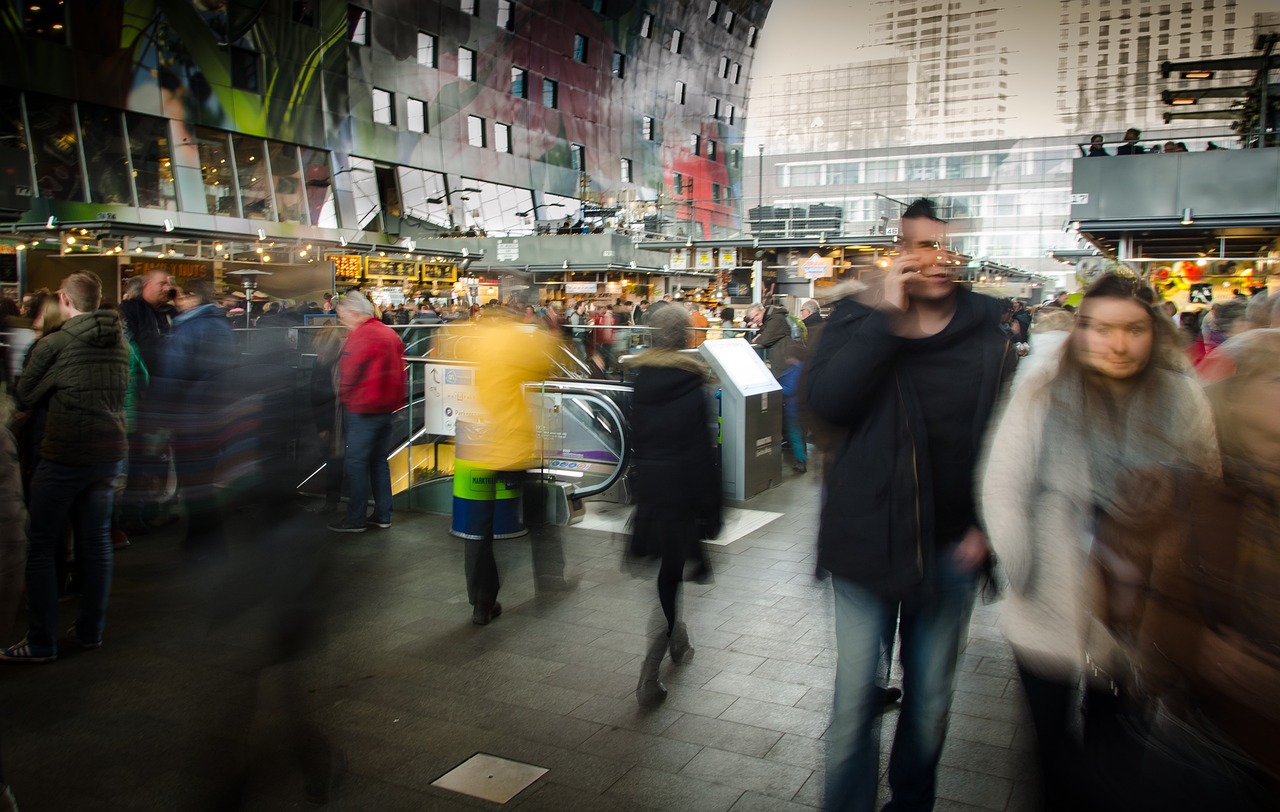
Top Online Secondhand Platforms
The digital age has revolutionized the way we shop, and secondhand shopping is no exception. With just a few clicks, you can explore a vast array of pre-loved items from the comfort of your own home. Online secondhand platforms have become a treasure chest for those looking to find unique goods while promoting sustainability. Why is this important? Well, it allows you to give a second life to items that might otherwise end up in a landfill, all while snagging some fabulous deals!
Among the plethora of options available, a few platforms stand out for their user-friendly interfaces, extensive selections, and commitment to sustainability. For instance, websites like ThredUp and Poshmark have gained immense popularity. ThredUp focuses on high-quality clothing, allowing users to buy and sell gently used apparel, while Poshmark combines social media elements with shopping, creating a community of fashion lovers who can share their finds and even host virtual closet sales.
In addition to these well-known platforms, there are also niche sites dedicated to specific categories of items. For example, Chairish specializes in vintage and antique furniture, making it a go-to for those looking to furnish their homes sustainably. Similarly, Depop has carved out a unique space for younger shoppers, offering a platform for buying and selling trendy, secondhand fashion. The variety of platforms means that no matter what you're looking for, there's likely a site tailored to your needs.
To give you a clearer picture of the best online secondhand platforms, here's a quick comparison table:
| Platform | Focus | Unique Feature |
|---|---|---|
| ThredUp | Clothing | High-quality curated selections |
| Poshmark | Fashion | Social shopping experience |
| Chairish | Furniture | Vintage and antique items |
| Depop | Fashion | Trendy items for a younger audience |
As you navigate these platforms, remember that the thrill of secondhand shopping lies not just in the finds, but in the stories behind them. Each item has a history, and by choosing to shop secondhand, you're becoming part of that narrative. So, whether you're hunting for a classic piece of clothing or a unique piece of furniture, embrace the adventure that comes with secondhand shopping online!
In conclusion, the world of online secondhand shopping is vast and exciting. With so many platforms at your fingertips, you can easily find quality items that not only fit your style but also align with your values. So, what are you waiting for? Dive into the world of sustainable shopping today and discover the treasures waiting for you!
Q1: How do I know if an online secondhand platform is trustworthy?
A1: Look for platforms with user reviews, secure payment options, and clear return policies. Trusted platforms often have a solid reputation in the community.
Q2: Can I negotiate prices on online secondhand platforms?
A2: Some platforms allow for price negotiations, while others have fixed prices. Always check the site's policies regarding offers and negotiations.
Q3: What should I look for when buying secondhand clothing online?
A3: Pay attention to the item's condition, brand, and measurements. Reading the item description carefully can help you avoid surprises!
Q4: Are there any fees for selling items on these platforms?
A4: Many platforms charge a commission or listing fee. Be sure to check the specific terms of each platform before selling.

Thrift Store Chains
When it comes to secondhand shopping, are the unsung heroes of sustainable fashion. These stores not only offer a wide range of affordable items but also play a significant role in promoting eco-friendly practices. Imagine walking into a store filled with a treasure trove of pre-loved clothing, furniture, and household goods, all waiting for a new home. It's like stepping into a time capsule where every item has a story to tell.
One of the most appealing aspects of thrift store chains is their diversity. From trendy clothing to vintage collectibles, you can find almost anything. Popular chains like Goodwill, Salvation Army, and Savers are known for their extensive selections that cater to all tastes and budgets. These stores often have rotating inventory, meaning that every visit can yield new surprises. You might find a chic blazer one day and a quirky lamp the next—each piece unique and full of character.
Moreover, shopping at these thrift chains not only saves you money but also contributes to a circular economy. By purchasing secondhand items, you're helping to reduce waste and decrease the demand for new production. This is crucial in a world where fast fashion and mass production have devastating effects on our environment. Thrift stores often support charitable causes, meaning your purchases can make a difference in your community, too. For example, Goodwill uses its proceeds to fund job training programs, helping individuals gain the skills they need to succeed.
Many thrift store chains also have a strong online presence, which makes shopping even more accessible. Websites and apps allow you to browse their inventory from the comfort of your home. This is particularly useful for those who may not have a thrift store nearby or prefer the convenience of online shopping. Through platforms like Goodwill's online auction site or Salvation Army's app, you can discover rare finds without ever stepping outside.
In addition to the variety and convenience, thrift store chains often have affordable pricing. Most items are priced significantly lower than retail, allowing you to snag high-quality goods without breaking the bank. It's like finding a hidden gem at a fraction of the cost! Plus, many stores have regular sales and discounts, making it even easier to score amazing deals.
However, it's essential to keep in mind that the experience of thrift shopping can vary by location. Some stores may be better organized than others, and the selection can change frequently. To make the most of your thrift store visits, consider these tips:
- Visit regularly to catch new arrivals.
- Check for sales or special discount days.
- Be open-minded and ready to dig through racks.
In conclusion, thrift store chains are a fantastic option for those looking to shop sustainably while finding unique items. They embody the spirit of recycling and reusing, making them a perfect fit for eco-conscious consumers. So, the next time you're looking to refresh your wardrobe or find that perfect piece for your home, consider heading to your local thrift store chain. You never know what treasures await you!

Specialty Vintage Shops
When it comes to secondhand shopping, are like hidden gems waiting to be discovered. These stores are not just about selling clothes; they curate a collection of unique, high-quality pieces that tell a story. Imagine walking into a shop where every item has a history, a character, and a style that stands out from the mass-produced fashion we often see in mainstream stores. Specialty vintage shops are dedicated to preserving fashion history while promoting sustainability, making them a must-visit for anyone who values both style and the environment.
Many of these shops focus on specific eras or styles, allowing you to find clothing that resonates with your personal taste. Whether you're on the hunt for a stunning 1920s flapper dress, a funky 1970s jumpsuit, or vintage accessories that add a unique flair to your outfit, these shops have you covered. The thrill of uncovering a rare find is what makes shopping at specialty vintage stores so exhilarating. It's like a treasure hunt, where each piece is a potential masterpiece waiting to be worn again.
Moreover, shopping at these establishments supports the circular economy. By choosing vintage, you're not only getting something one-of-a-kind, but you're also reducing the demand for new clothing production, which is often detrimental to the environment. The fashion industry is notorious for its wastefulness, and by opting for vintage, you're making a statement for sustainability and ethical consumption.
To illustrate the impact of specialty vintage shops, consider the following table that outlines the benefits of shopping vintage versus new:
| Aspect | Vintage Shopping | New Shopping |
|---|---|---|
| Environmental Impact | Reduces waste and promotes recycling | Contributes to pollution and resource depletion |
| Uniqueness | One-of-a-kind items | Mass-produced, often generic styles |
| Quality | Often made with durable materials | Quality varies widely |
| Price | Affordable, with potential for high resale value | Can be expensive, especially for trendy items |
So, next time you're looking to refresh your wardrobe, consider visiting a specialty vintage shop. Not only will you find unique pieces that express your individuality, but you'll also be contributing to a more sustainable future. Plus, you'll have a great story to tell about where you found that fabulous outfit!
- What should I look for when shopping at a vintage store?
Look for quality materials, unique designs, and items that fit well. Don't hesitate to check for any damages or signs of wear. - Are vintage clothes more expensive than new ones?
Not necessarily! While some vintage items can be pricey, many are affordable and can even be a great investment due to their uniqueness. - How do I care for vintage clothing?
Always check the care label. Generally, hand washing or dry cleaning is recommended to preserve the fabric and structure. - Can I return items bought from vintage shops?
Return policies vary by shop, so it’s best to inquire before making a purchase.

Local Secondhand Shops to Explore
When it comes to sustainable shopping, local secondhand shops are like hidden gems waiting to be discovered. These shops not only offer a treasure trove of unique finds, but they also play a vital role in supporting small businesses and fostering community spirit. Imagine walking into a quaint little store filled with eclectic items, each with its own story to tell. From vintage clothing to retro furniture, local secondhand shops provide a delightful shopping experience that you simply can't replicate online.
One of the most rewarding aspects of shopping at local secondhand stores is the thrill of the hunt. You never know what you might find! Whether it’s a rare vinyl record, a charming piece of home décor, or a stunning vintage dress, each visit can feel like a mini-adventure. Plus, you’re not just buying items; you’re contributing to a sustainable cycle that reduces waste and promotes reusability in your community.
Supporting local shops also means investing in your community. Many of these stores are run by passionate individuals who care deeply about their craft and the environment. By choosing to shop local, you’re helping to keep these businesses afloat, which in turn creates jobs and enriches the local economy. It's a win-win situation for everyone involved!
Here are a few notable local secondhand shops that you might want to check out, depending on your location:
- Second Chance Boutique - Known for its carefully curated selection of women’s clothing and accessories, this boutique prioritizes quality and style.
- Treasure Trove Thrift - A community favorite, this shop features a wide range of items from furniture to clothing, all at affordable prices.
- Vintage Vibes - Specializing in vintage fashion, this shop is perfect for those looking to add a unique touch to their wardrobe.
Additionally, many cities host local events that feature multiple secondhand vendors, creating a vibrant atmosphere for shoppers. These pop-up vintage markets not only showcase local talent but also encourage the exchange of ideas and styles among vendors and customers alike. The sense of community at these events is palpable, making it the perfect setting for discovering your next favorite piece.
In conclusion, exploring local secondhand shops is not just about finding great deals; it's about embracing a lifestyle that values sustainability, creativity, and community. So, grab your reusable shopping bag, and get ready to uncover some amazing treasures in your neighborhood!
Q: Why should I shop at local secondhand stores?
A: Shopping at local secondhand stores helps reduce waste, supports small businesses, and allows you to find unique items that you won’t see in mainstream retail stores.
Q: How can I find local secondhand shops in my area?
A: You can search online through platforms like Google Maps, or use social media to find recommendations from locals. Additionally, community boards and local event listings often highlight secondhand markets and shops.
Q: Are the items in secondhand shops of good quality?
A: Many secondhand shops carefully curate their inventory, ensuring that the items they sell are of good quality. However, it’s always a good idea to inspect items for wear and tear before purchasing.
Q: Can I negotiate prices at secondhand shops?
A: In many local secondhand shops, negotiating prices is acceptable, especially if you’re buying multiple items. Just be polite and respectful when discussing prices with the seller.

Community Donation Centers
Community donation centers are more than just places to drop off your unwanted items; they are vibrant hubs of sustainable shopping that breathe new life into pre-loved goods. When you step into one of these centers, you enter a world where every item has a story, and every purchase contributes to a greater good. These centers typically operate on a model that not only promotes recycling and reusing but also supports local communities by providing affordable goods to those in need. Imagine walking through aisles filled with unique finds, from vintage clothing to quirky home décor, all while knowing that your spending is making a positive impact.
One of the most remarkable aspects of community donation centers is their commitment to sustainability. By selling secondhand items at low prices, they help reduce waste and keep perfectly good products out of landfills. This practice aligns perfectly with the principles of a circular economy, where resources are reused and recycled rather than discarded. Additionally, many of these centers support local charities, ensuring that the proceeds from sales go back into the community, funding essential services and programs that benefit everyone.
When you shop at a community donation center, you might find a hidden gem or two. These centers often receive a diverse array of items, from gently used furniture to books, toys, and clothing. The thrill of the hunt is what makes secondhand shopping so exciting! Plus, you never know what unique treasures you might uncover. Whether you’re on the lookout for a vintage jacket or a classic piece of furniture, community donation centers are treasure troves waiting to be explored.
In addition to offering unique items, community donation centers often host events and workshops aimed at promoting sustainability and community engagement. These events can range from DIY upcycling workshops to clothing swaps, encouraging individuals to think creatively about how they can reuse and repurpose items rather than simply discarding them. By participating in these activities, shoppers not only save money but also learn valuable skills that contribute to a more sustainable lifestyle.
So, if you’re looking to make a difference while enjoying the thrill of secondhand shopping, consider visiting your local community donation center. Not only will you find great deals on quality items, but you’ll also be supporting a vital community resource that promotes sustainability and social responsibility. Remember, every purchase you make is a step towards a more sustainable future!
- What types of items can I find at community donation centers?
Community donation centers typically offer a wide range of items, including clothing, furniture, books, toys, and household goods. The selection can vary greatly depending on donations received. - How do community donation centers support local charities?
Many centers donate a portion of their proceeds to local charities or community programs, helping to fund essential services and initiatives that benefit the community. - Are the items sold at community donation centers in good condition?
Most community donation centers carefully inspect items before putting them up for sale. While you may find some items showing signs of wear, many are in excellent condition and can be a great bargain. - Can I donate items to community donation centers?
Yes! Community donation centers encourage donations of gently used items. It's a great way to declutter your home while contributing to a good cause.

Pop-Up Vintage Markets
Pop-up vintage markets have become a vibrant hub for secondhand shopping enthusiasts, turning the act of finding unique items into an exhilarating treasure hunt. Imagine walking into a bustling space filled with eclectic collections, where the air is thick with the scent of nostalgia and creativity. These markets are not just about shopping; they’re about experiencing a community that shares a passion for sustainable fashion and one-of-a-kind finds. The atmosphere is electric, and the excitement is palpable as you sift through racks of vintage clothing, furniture, and accessories, all while supporting local artisans and vendors.
One of the best aspects of pop-up vintage markets is their ephemeral nature. They often appear in unexpected locations, such as parks, community centers, or even vacant storefronts, creating a sense of urgency to explore before they vanish. This fleeting quality adds to the thrill—who knows what treasures you might discover? From retro dresses to antique home decor, each item tells a story and carries a piece of history. Plus, shopping at these markets means you’re not just buying a product; you’re participating in a movement that challenges fast fashion and promotes sustainability.
These markets also offer a platform for local vendors to showcase their curated collections, often featuring handmade or refurbished items that you won’t find in mainstream stores. It’s a fantastic way to support small businesses and artisans who pour their heart and soul into their creations. Many vendors are passionate about sustainability and are eager to share the stories behind their pieces, making your shopping experience even more enriching.
When attending a pop-up vintage market, keep an eye out for special events and workshops that may be happening. Many markets host local artists who offer crafting sessions, DIY workshops, or even fashion shows that highlight vintage styles. Participating in these activities not only enhances your shopping experience but also allows you to connect with like-minded individuals who share your love for unique finds and sustainable practices.
In summary, pop-up vintage markets are more than just shopping destinations; they are community gatherings that celebrate creativity, sustainability, and the beauty of secondhand treasures. So, the next time you hear about a pop-up market in your area, don’t hesitate to check it out. You might just find that perfect vintage piece that not only adds flair to your wardrobe but also contributes to a more sustainable future.
- What should I expect at a pop-up vintage market? Expect a lively atmosphere filled with unique, curated vintage items, local vendors, and possibly workshops or events.
- How often do pop-up vintage markets occur? They can vary by location, but many cities host them regularly, especially during warmer months or around holidays.
- Are items at pop-up markets typically expensive? Prices can vary widely, but many vendors offer affordable options, making it a great place to find budget-friendly treasures.
- Can I negotiate prices at these markets? Yes! Many vendors are open to negotiation, especially if you're buying multiple items.
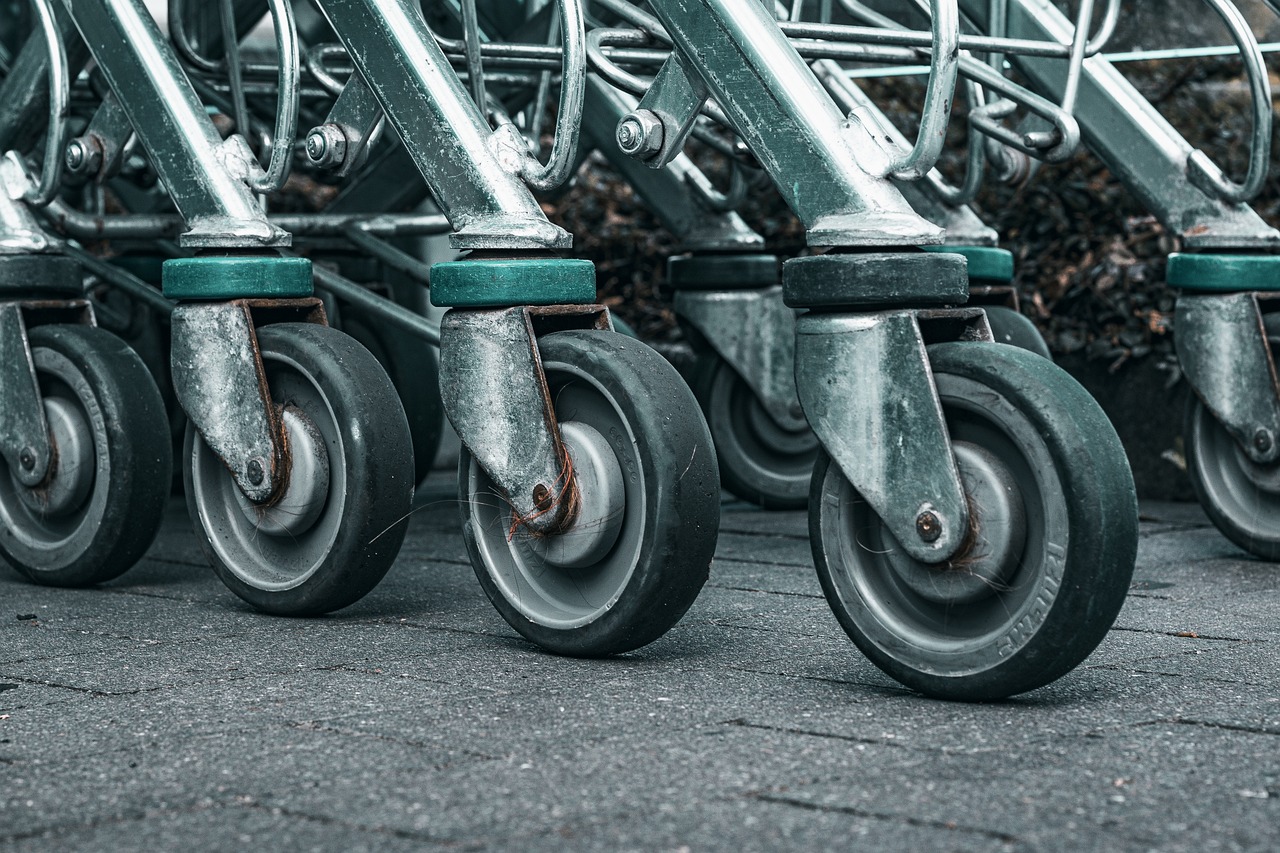
Tips for Successful Secondhand Shopping
When it comes to secondhand shopping, having a solid strategy can make all the difference. You might think it’s just about rummaging through racks, but there’s an art to it! First and foremost, patience is key. You won’t always find what you’re looking for on your first visit, but that’s part of the thrill! It’s like a treasure hunt; sometimes you have to dig a little deeper to uncover those hidden gems.
One of the best tips for successful secondhand shopping is to keep an open mind. You may walk into a shop with a specific item in mind, but it’s often the unexpected finds that bring the most joy. For instance, you might be searching for a pair of jeans and end up leaving with a stunning vintage jacket that you never knew you needed! This flexibility not only enhances your shopping experience but also increases your chances of discovering unique pieces.
Another crucial aspect is to know your sizes. Sizing can vary significantly between brands and eras, especially when dealing with vintage clothing. It’s helpful to have a tape measure handy or to wear clothing that’s easy to try items over. If you’re shopping online, always check the sizing charts provided by the seller and read any reviews regarding fit. This way, you can avoid the disappointment of receiving something that doesn’t fit.
When you’re in a physical store, don’t hesitate to touch and feel the items. Assessing the condition of fabrics, seams, and zippers is essential. Look for signs of wear and tear, and don’t shy away from asking about the item’s history. Many shop owners are more than happy to share stories about their merchandise, which can make your purchase feel even more special.
For those who enjoy online shopping, utilize various platforms effectively. Websites and apps like Depop, Poshmark, and ThredUp have made it easier than ever to find quality secondhand goods. To maximize your success, set up alerts for specific items or brands you’re interested in. This way, you’ll be notified as soon as something matching your criteria becomes available. Additionally, always check seller ratings and reviews to ensure you’re buying from reputable sources.
When it comes to pricing, don’t be afraid to negotiate. Many thrift stores and secondhand shops expect some haggling, especially if you're purchasing multiple items. Politely asking for a discount can sometimes lead to a better deal, allowing you to save money while still supporting sustainable practices. If you’re at a community donation center or a local market, consider trading items you no longer need; it’s a win-win situation!
Lastly, remember to have fun! Secondhand shopping is not just about acquiring new items; it’s an experience. Whether you’re exploring a local thrift store, browsing online, or attending a pop-up market, embrace the journey. You never know what you might find, and the stories behind each piece can make your wardrobe truly unique.
Q: How do I know if a secondhand item is worth buying?
A: Look for quality materials, good craftsmanship, and overall condition. If it’s a piece you love and will wear often, it’s likely worth the investment.
Q: Can I return items bought from secondhand shops?
A: Return policies vary by shop. Many thrift stores and online platforms have final sale policies, so be sure to check before purchasing.
Q: Are online secondhand shops safe to use?
A: Yes, as long as you buy from reputable sellers with good reviews. Always check ratings and read descriptions carefully.
Q: How can I support local secondhand shops?
A: Visit them regularly, share your finds on social media, and encourage friends to shop there too. Supporting local businesses helps sustain the community and promotes eco-friendly practices.
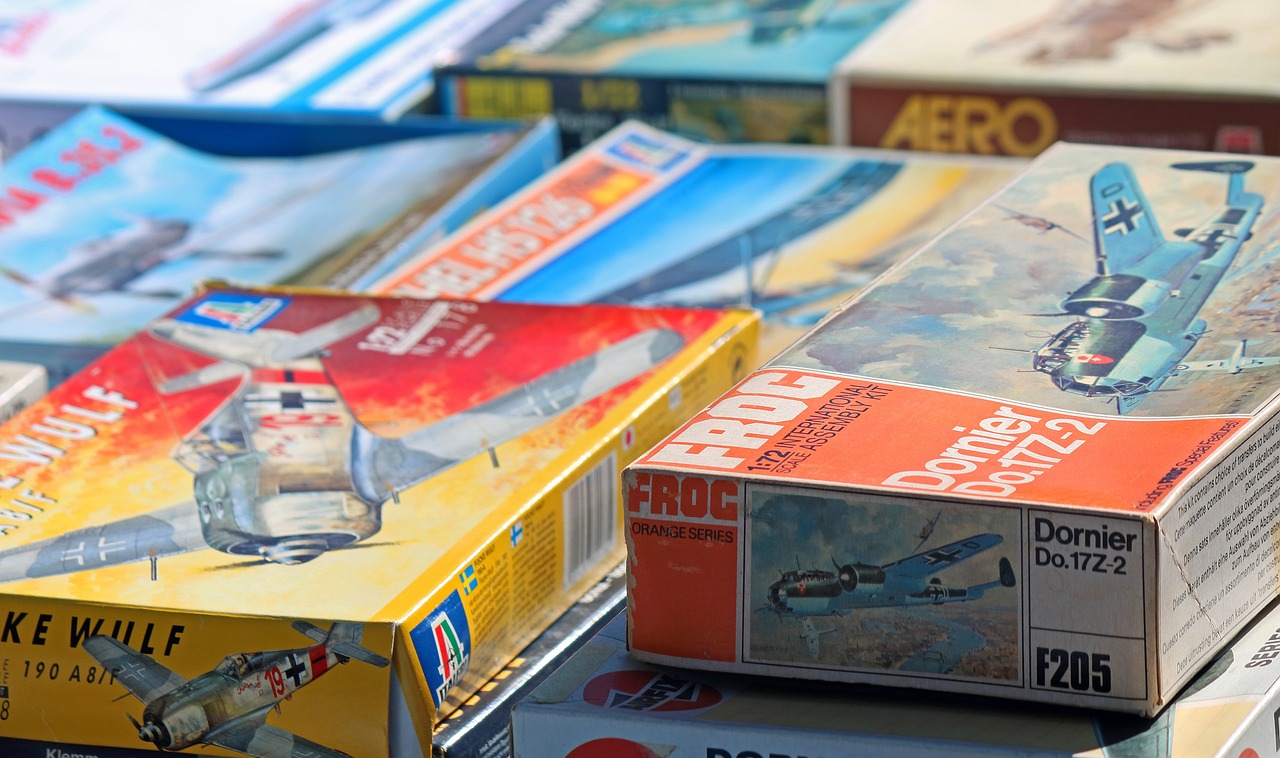
Identifying Quality Items
When it comes to secondhand shopping, knowing how to identify quality items is crucial for making wise purchases. Unlike shopping for brand new products, where everything is pristine and shiny, secondhand items come with their own stories and character. However, this doesn't mean you should settle for less. In fact, the thrill of finding a hidden gem is what makes secondhand shopping so exciting! But how do you ensure that the treasures you uncover are worth your hard-earned money?
First and foremost, examine the condition of the item closely. Look for any signs of wear and tear, such as frayed edges, stains, or broken zippers. While some imperfections can add to the charm of vintage pieces, anything that significantly detracts from the item’s usability should raise a red flag. For clothing items, check the seams and fabric for durability. If you notice loose threads or fading colors, you might want to think twice before purchasing.
Next, consider the materials used in the item. High-quality materials often indicate a longer lifespan for the product. For instance, natural fibers like cotton, wool, and silk tend to be more durable and comfortable than synthetic alternatives. If you come across leather items, ensure they are genuine leather rather than faux. Genuine leather not only looks better but also ages beautifully, developing a unique patina over time.
Another important factor is craftsmanship. Well-made items often feature details that reflect careful construction. For example, check for even stitching, quality buttons, and sturdy fastenings. If you’re looking at furniture, inspect the joints and finishes. A well-crafted piece will have a solid feel and should not wobble or creak. Investing in quality craftsmanship means you’re less likely to face repairs or replacements in the near future.
Lastly, don't shy away from asking questions. If you're shopping at a local thrift store or a vintage shop, the staff can often provide valuable insights about the items. They may know the history of a piece or can tell you about its previous owner, which can add to its charm. Plus, if you’re unsure about the quality, asking about return policies can give you peace of mind. After all, the goal is to leave with items that you’ll cherish rather than regret!
In summary, when identifying quality items during your secondhand shopping adventures, keep these key points in mind:
- Inspect the condition for signs of wear and tear.
- Consider the materials used, opting for natural fibers over synthetics.
- Evaluate craftsmanship through details like stitching and sturdiness.
- Ask questions to gain insights about the item’s history and quality.
By honing your ability to spot quality items, you can transform your secondhand shopping experience from a simple hunt into a treasure-seeking adventure. Remember, every item has a story, and with a bit of practice, you’ll become a pro at finding those unique pieces that not only look great but also stand the test of time!
Q: How can I tell if a secondhand item is worth buying?
A: Look for signs of quality, such as the condition, materials, and craftsmanship. Don't hesitate to ask the seller about the item's history.
Q: Are there specific brands known for quality secondhand items?
A: Yes! Brands like Levi's, Patagonia, and Coach are often recognized for their durability and timeless style, making them great finds in the secondhand market.
Q: Is it okay to negotiate prices at thrift stores?
A: Absolutely! Many thrift stores are open to negotiations, especially if you’re purchasing multiple items. Just be polite and respectful when discussing prices.
Q: How can I clean secondhand items before using them?
A: Always check the care label first. For clothing, washing in cold water and air drying is often best. For furniture, use appropriate cleaners for the material.
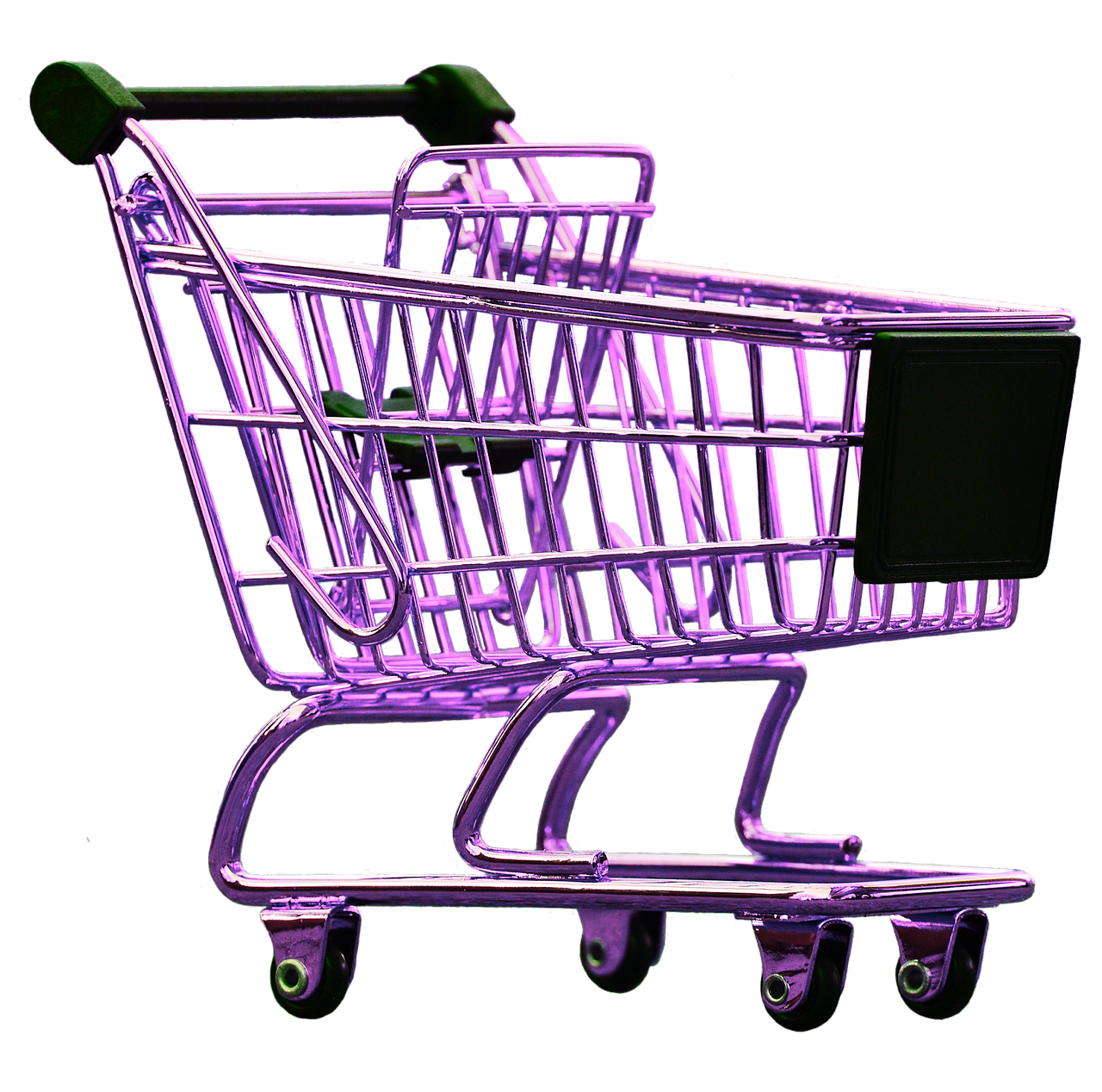
Negotiating Prices and Trades
When it comes to secondhand shopping, one of the most exciting aspects is the opportunity to negotiate prices and explore trades. This is not just about saving a few bucks; it’s about engaging in a dialogue that can enhance your shopping experience and promote sustainability. Imagine walking into a thrift store or a vintage market, spotting that perfect jacket that has just the right amount of wear and character. You know it’s a steal at the price tag, but why not try to get it for even less? Negotiating is a skill, and like any skill, it takes practice to master.
First, it’s essential to approach negotiations with a friendly attitude. A smile can go a long way! Start by complimenting the item you're interested in. For example, you might say, “I love this jacket! It has such a unique style.” This not only establishes a positive rapport with the seller but also shows that you appreciate the value of their goods. Once you’ve built that connection, you can gently express your thoughts on the price. It helps to do a little research beforehand; knowing what similar items sell for can empower you to make a reasonable offer.
Consider using the following strategies when negotiating:
- Be Polite: Always approach the seller with respect and kindness.
- Highlight Flaws: If there are minor imperfections, mentioning them can justify a lower offer.
- Bundle Items: If you find multiple items you like, ask if they can offer a discount for purchasing them together.
- Be Willing to Walk Away: Sometimes, the best negotiation tactic is showing that you are not desperate to buy. If the price doesn’t work for you, thank the seller and move on. This can sometimes lead them to reconsider.
Additionally, trading items can be a fantastic way to score unique pieces while promoting a sustainable shopping culture. If you have items in good condition that you no longer use, consider bringing them along when you shop. Many local secondhand shops and pop-up markets welcome trade-ins, allowing you to swap your old treasures for something new to you. Just be sure to present your items in a clean and appealing manner, as first impressions matter!
Finally, remember that negotiation is an art, not a science. There will be times when a seller is firm on their price, and that’s completely okay. The goal is to create a fun and engaging atmosphere where both parties feel satisfied with the outcome. So the next time you find yourself in a secondhand shop, embrace the thrill of the hunt, polish your negotiation skills, and enjoy the journey of sustainable shopping!
Q: How can I effectively negotiate prices when shopping secondhand?
A: Start with a friendly approach, compliment the item, and express your thoughts on the price. Research similar items beforehand to make a reasonable offer.
Q: Are all secondhand shops open to negotiation?
A: Not all shops may be open to negotiation, especially larger chains. However, local thrift stores, vintage shops, and pop-up markets often welcome it.
Q: Can I trade items at secondhand shops?
A: Many local shops and markets accept trade-ins. Bring items in good condition and inquire about their trade policy.
Q: What if the seller is firm on their price?
A: If the price doesn’t work for you, thank the seller and move on. Sometimes, this can lead them to reconsider or offer a better deal later.
Frequently Asked Questions
- What are the benefits of shopping secondhand?
Shopping secondhand offers numerous benefits, including reducing waste and minimizing your carbon footprint. By purchasing pre-owned items, you contribute to a circular economy, which helps to lessen the demand for new products and the resources needed to create them. Plus, you can often find unique and high-quality pieces that tell a story!
- How can I find the best secondhand shops in my area?
Finding the best secondhand shops can be an adventure! You can start by checking online reviews, asking friends for recommendations, or using social media to discover local favorites. Additionally, local community boards and apps like Yelp can provide insights into popular thrift stores and vintage shops nearby.
- Are online secondhand platforms reliable?
Absolutely! Many online secondhand platforms have built a reputation for reliability and quality. Websites and apps like Poshmark, ThredUp, and Depop offer buyer protection policies, making it safe to shop for secondhand items. Just be sure to check seller ratings and reviews to ensure a positive experience!
- What should I look for when shopping for quality secondhand items?
When hunting for quality secondhand items, pay attention to the materials, craftsmanship, and overall condition. Look for signs of wear, check seams and zippers, and feel the fabric. A little inspection can go a long way in ensuring you score a fantastic find that will last!
- Can I negotiate prices at thrift stores?
Yes, negotiating prices can be a fun part of the secondhand shopping experience! While not all thrift stores allow haggling, many smaller shops or local vendors at pop-up markets might be open to discussion. Just approach sellers with a friendly attitude and be respectful when making your offer.
- How do community donation centers contribute to sustainability?
Community donation centers play a vital role in sustainability by providing a space for people to donate items they no longer need. These centers sell secondhand goods at low prices, keeping items out of landfills and supporting local charities. It's a win-win for both shoppers and the community!
- What are pop-up vintage markets?
Pop-up vintage markets are temporary events where vendors set up shop to sell curated secondhand and vintage items. These markets create a lively atmosphere filled with unique finds, allowing you to support local businesses while enjoying a fun shopping experience. It's like a treasure hunt!



















